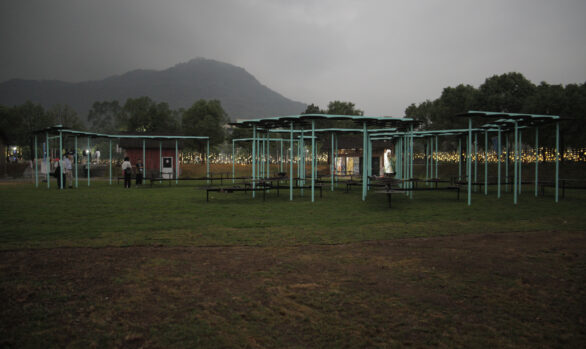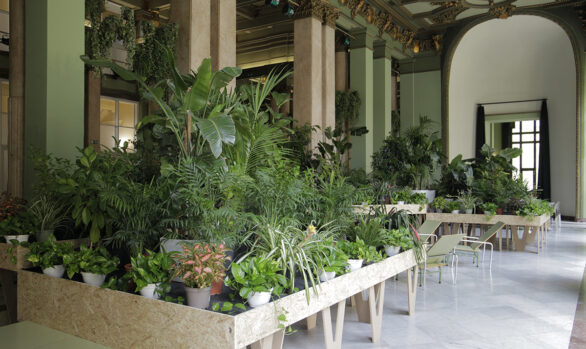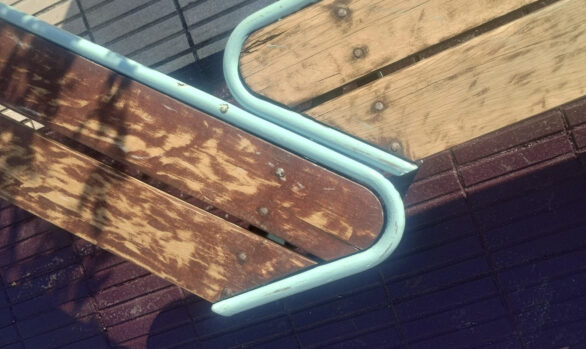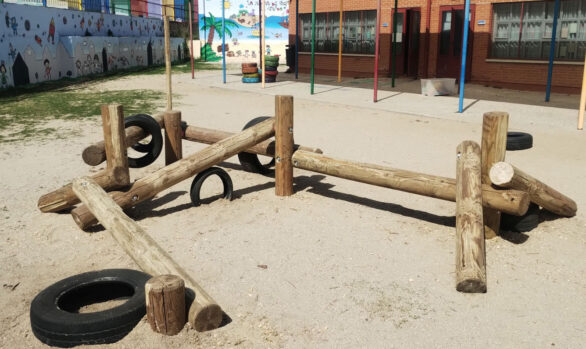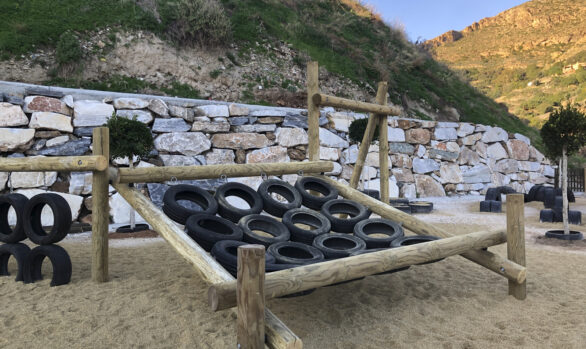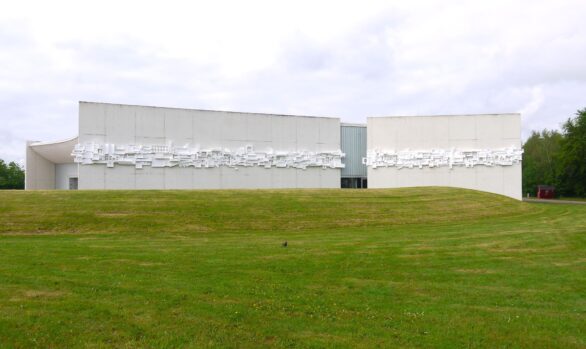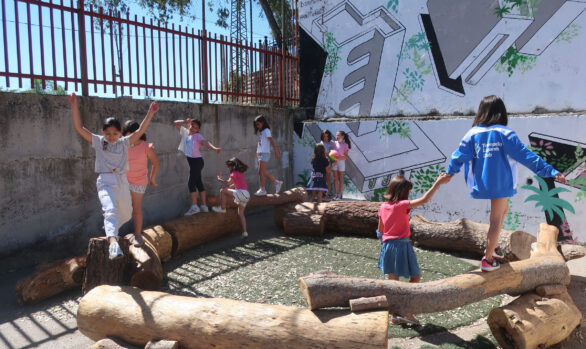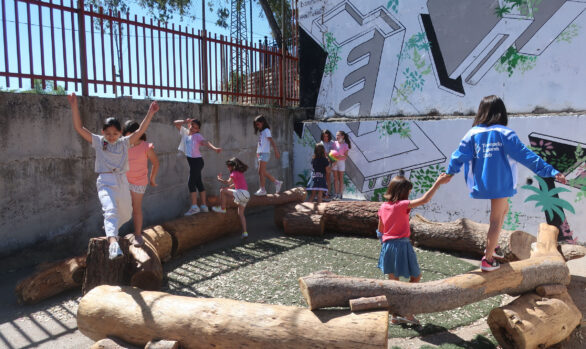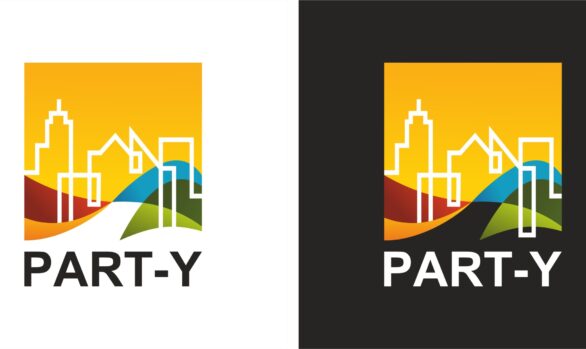Autobarrios San Cristóbal
Autobarrios began on January of 2012 in the neighborhood of San Cristóbal de los Ángeles, Madrid. For the first twelve months, the project worked along social and local agents in the neighborhood, adding up to their current projects and becoming the excuse to consolidate them. After the meeting a platform composed of different local associations was born, Autobarrios SanCristobal, as a collective investigation process of a run-down place, reinventing its function and use, through the construction of an urban space attractive to and for the youth and neighbors of the neighborhood.
From that moment, the project has followed a natural process based on the consolidation with the objective of strengthening the local network of resources recourses locales so we´re able to define, nourish and making the initiative a reality.
As of today, this process keeps developing and making possible the management of the urban space that finished its construction in May of 2014, because a space is not finished with the construction of a designed object, rather it´s continuously developing in a social and cultural production.
Click here to see all the pictures of the project: Facebook page ofAutobarrios SanCristobal.
The process
Strategies of urban planning in a communal space to dignify and transform a run-down place of the neighborhood in a useful public space suited to the neighbor’s needs.
STEP III (2013-2014) REVITALIZATION AND CONSTRUCTION
The building phase establishes the common imaginaries of the space: the collective interventions executed go from a scenery, to a cinema and usable areas that have been developed in a way that could still be used when they are not filling the function they were created for.
Autobarrios is an organic and contextualized project that evolves in real time: in the building phase, the resources available that were possible to re-use and restrict conditioned the use of the urban furniture, its related uses and the execution times. The building interventions adapted to the possibilities and were planned and executed independently from each other.
> 1st step = Refurbishment work
+ Paint> revitalization of a 1945 m2 area: #sancrisdecolores Part I (February 2013) y Part II (May 2013) developed with Boa Mistura. With the collaboration of Productos Diez y Torremovil de Layher.
+ Floors > Cleaning and adaptation of 2597 m2: #arreglandolapachamama (September 2013) with the collaboration of Departamento de Conservación y Renovación de Vías Públicas del Ayuntamiento de Madrid.
> 2nd step = Construction
+ Multipurpose urban furniture > revitalization of the northern area of the space (1131 m2): #bricosancris Part II(Noviembre 2013) desarrollado con Collectif Etc. With the collaboration of Institut Français de Madrid, Matadero Madrid, Acciona y Renault.
+ Multipurpose urban furniture > revitalization of the southern area of the space (726 m2): #bricosancris Part III (Abril 2014). With the collaboration of Matadero Madrid, Acciona y Renault.
+ Floors > building of a path that is protected from the rain in the northwestern part of the space #bricosancris Part IV (Mayo 2014). With the collaboration of Bibliobuses Madrid, Acciona y Renault.
> 3ª step = The finish
+ Electric connection / Wi-Fi connection
+ Complements (signage, security, cleaning)
STEP IV (2014) MANAGEMENT AND ACTIVATION
The public space is always being constructed through a social and cultural production that keeps a place alive and in constant evolution: In this context is where the training of the youth in San Cristobal´s neighborhood takes place, training about the activation and sustainable management of the recovered communal space. A technical and educational training that allows the boosting and consolidation of processes that are already working in the neighborhood and the activation of those that aren´t, so the youth become cultural managers of their own space and enablers of the cultural experience as an educational tool.
The Curso de Gestión Cultural (Cultural Management course)#culturabajopuente has been working with the youngsters since June, to achieve cultural, technical and managerial autonomy to facilitate cultural experiences under the reformed bridge.
DEVELOPED WITH
The youngsters are the main actors of this projects and the builders of a public space which they identify with, drew by them so everyone can make use of it.
> A network of social and local partners of San Cristóbal de los Ángeles: Associations and local groups whose function to orientate and guide during the whole process to integrate the project inside the social fabric of the neighborhood.
Casa San Cristóbal-Fundación Montemadrid: It´s a center in the neighborhood open to the public which offers a social educative and cultural program for every age.
Educación Cultura y Solidaridad: It´s a non-profit association that, since 1990, works for the social integration in the neighborhood; they offered socialeducative resources to youngsters and the families of the neighborhoods.
Asociación de Vecinos La Unidad de San Cristóbal: created in 1978 y declared public utility in 1985, working in the participation, boost and management if different plans to improve the neighborhood and the defense of the interest of the neighborhoods.
> External collaborators:
Boa Mistura: A group of artists that mainly works in the public space through urban art, having done projects in South Africa, Norway, Berlin o Sao Paulo.
Collectif Etc: A group of French architects that build a public space integrating the local population in the creative process.
lacasinegra / Vermut / Nervio Films&Foto: artistic groups dedicated to creation, management, investigation, reflection and cultural production through cinema practice and audiovisual devices.
Obsoletos: investigation projects, creation and distribution of creative system of transformation of technologic waste.
> Network of Company Collaboratos of Polígono de Villaverde: Local companies that collaborate through their implication as specialized professionals, giving up tools to support stocked materials or materials out of service that can be reused to shape the space.
FINANCED BY
Casa San Cristóbal y La Casa Encendida – Fundación Montemadrid
Acknowledgements
To Concha Lorenzana of Antígona Procesos Participativos because of her knowledge, patience and the support she devoted to the project.
To Manuel Basagoiti and to Adrian Masip Moriarty for sharing with us their experience.

